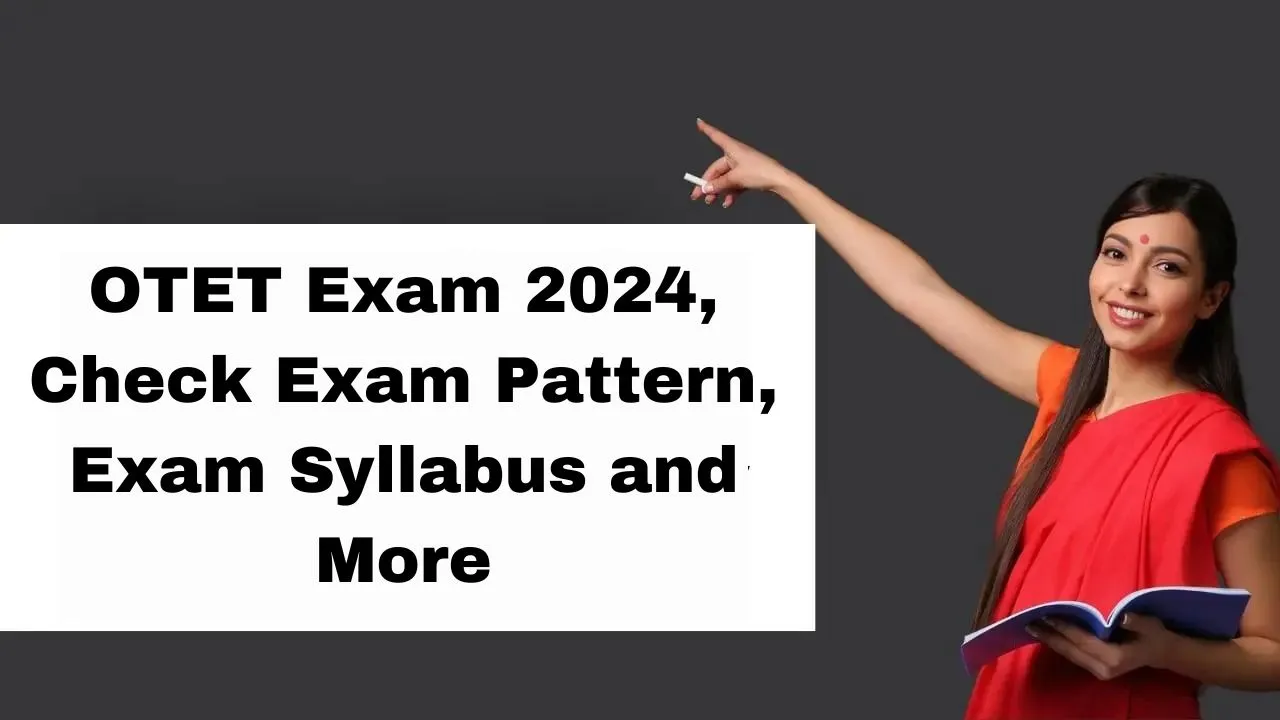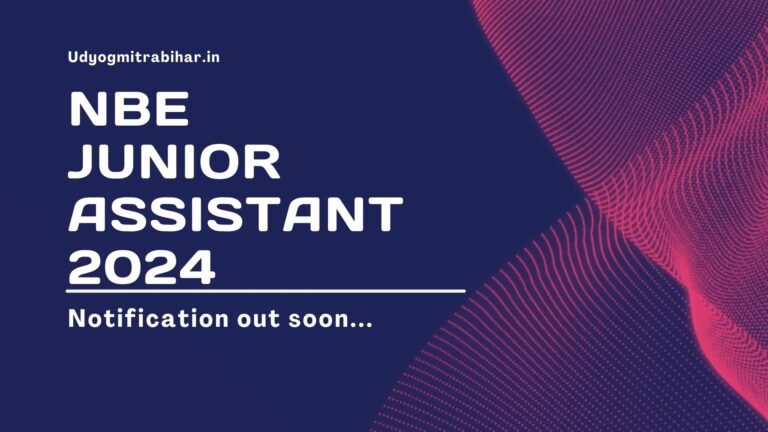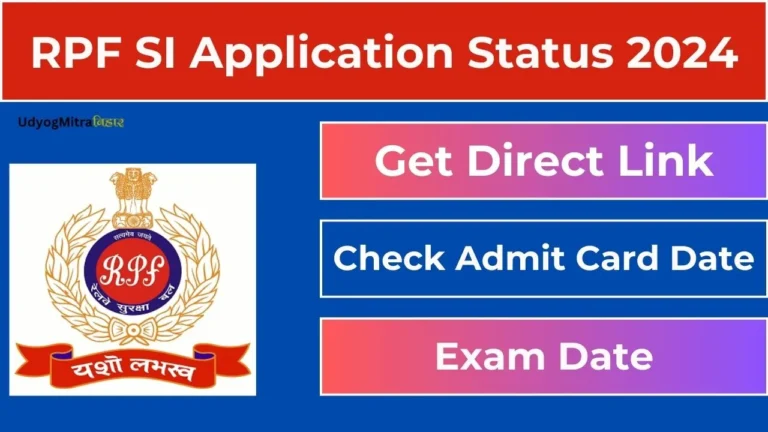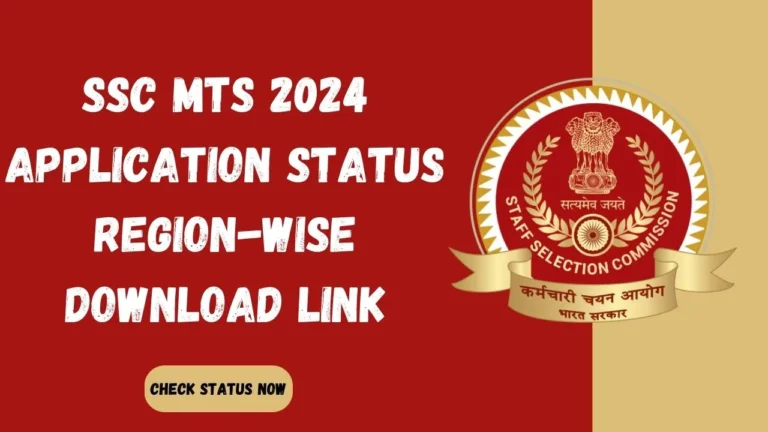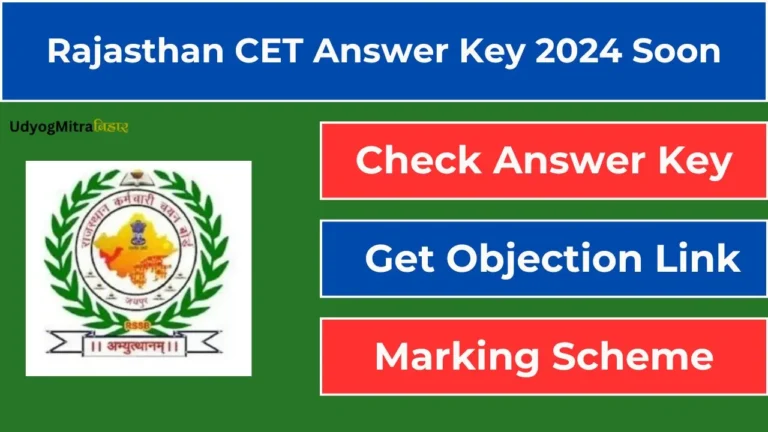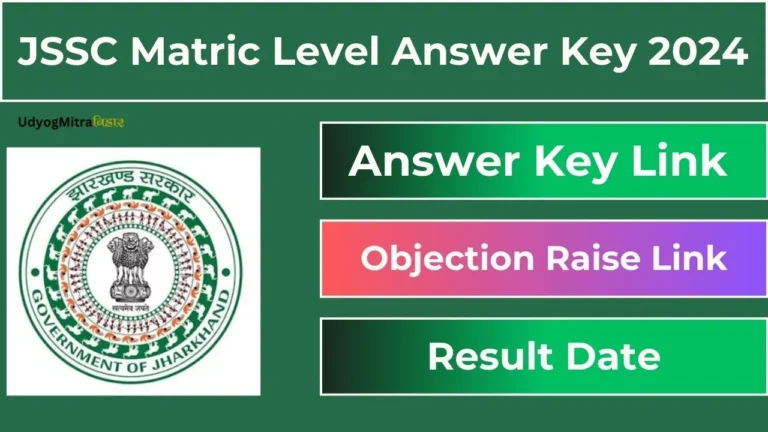The BSE, Odisha, has announced that the Odisha Teacher Eligibility Test (OTET) will be held on 9th August 2024. This is good news for aspiring teachers in Odisha seeking to qualify for primary and upper primary teaching positions.
In this article, candidates can find essential information about the OTET Exam, including the exam date, exam pattern, and admit card.
Contents
- 1 Overview of OTET Exam 2024
- 2 Odisha Teacher Eligibility Test Admit Card
- 3 Odisha Teacher Eligibility Test Exam Pattern
- 4 Odisha Teacher Eligibility Test Syllabus for Paper – 1
- 4.1 Section A: Child Development and Pedagogy
- 4.1.1 Unit 1: Understanding Child Development during Childhood (Focus on Primary Level Children)
- 4.1.2 Unit 2: Understanding Learning Process and Learners
- 4.1.3 Unit 3: Concept of Inclusive Education and Understanding Children with Special Needs
- 4.1.4 Unit 4: Approaches to Teaching and Learning
- 4.1.5 Unit 5: Assessment
- 4.2 Section B: Language (Odia/Urdu/Hindi/Telugu/Bengali)
- 4.3 Section C: Language (English)
- 4.4 Section D: Mathematics
- 4.5 Section E: Environmental Studies (EVS)
- 4.1 Section A: Child Development and Pedagogy
- 5 OTET Syllabus 2024 for Paper – 2
- 5.1 Child Development and Pedagogy – 30 Marks
- 5.2 Language-I (Odia/Urdu/Hindi/Telugu/Bengali) – 30 Marks
- 5.3 Language-II (English) – 30 Marks
- 5.4 Mathematics (Only for Mathematics and Science Teachers)
- 5.5 Science
- 5.6 Social Studies (Only for Social Studies Teachers)
- 6 OTET Cut-Off Marks 2024
- 7 Exam Centers of OTET Exam 2024
- 8 FAQs
Overview of OTET Exam 2024
The OTET exam is required for those who want to become teachers for Classes I to VIII in Odisha Board-affiliated schools, including government, private aided, and private unaided schools.
| Name of Exam | Odisha Teacher Eligibility Test (OTET) |
|---|---|
| Conducting Body | Board of Secondary Education Odisha |
| Admit Card Release Date | 2 August 2024 |
| Exam Date | 9 August 2024 |
| Official Website | www.bseodisha.ac |
Odisha Teacher Eligibility Test Admit Card
The OTET Admit Card will be available to download from 2nd August 2024 on the Board of Secondary Education, Odisha’s official website.
The exam is scheduled for 9th August 2024, and candidates must download, print, and verify all details on the admit card to gain entry to the examination hall.
Odisha Teacher Eligibility Test Exam Pattern
The BSE Odisha determines the exam pattern, with varying patterns for Primary and Upper Primary classes. Each paper of the OTET exam has a duration of 2½ hours –
OTET Exam Pattern of Paper 1
Paper 1 consists of 150 multiple-choice questions and candidates will be given 2.5 hours to complete it –
| Subjects | No. Of Questions | Marks |
|---|---|---|
| Child Development & Pedagogy | 30 | 30 |
| Language-I (Odia/ Urdu/ Hindi/ Telugu/ Bengali) | 30 | 30 |
| Language-II (English) | 30 | 30 |
| Mathematics | 30 | 30 |
| Environment Studies | 30 | 30 |
| Total | 150 | 150 |
OTET Exam Pattern of Paper 2
The exam pattern for Paper 2 includes 210 multiple-choice questions in the question paper, with a duration of 2.5 hours for the exam.
| Subjects | No. Of Questions | Marks |
|---|---|---|
| Child Development & Pedagogy | 30 | 30 |
| Language-I (Odia/ Urdu/ Hindi/ Telugu/ Bengali) | 30 | 30 |
| Language II (English) | 30 | 30 |
| Mathematics & Science | 60 (30 questions from Mathematics and 30 questions from Science) | 60 |
| Social Studies | 60 (30 questions from History and Political Science, and 30 questions from Geography) | 60 |
Odisha Teacher Eligibility Test Syllabus for Paper – 1
The Odisha Teacher Eligibility Test (OTET) syllabus covers a broad range of subjects. It is divided into sections including Child Development and Pedagogy, Language (Odia/Urdu/Hindi/Telugu/Bengali), English, Mathematics, and Environmental Studies.
Each section is carefully designed to ensure candidates have a thorough understanding of educational principles, teaching methods, and more.
Section A: Child Development and Pedagogy
Unit 1: Understanding Child Development during Childhood (Focus on Primary Level Children)
- Concepts, principles, and stages of child development
- Characteristics of physical, cognitive, social, emotional, and moral development in childhood
- Influence of heredity and environment on child development
Unit 2: Understanding Learning Process and Learners
- Concept and nature of learning; individual differences in learning
- Understanding how a child learns through observation and imitation
- Various methods of learning and their understanding
- Basic conditions for learning and promoting learning through motivation, classroom environment, and teacher behavior
- Development of creative thinking
Unit 3: Concept of Inclusive Education and Understanding Children with Special Needs
- Concept of inclusive education
- Addressing the needs of a diverse group of learners in inclusive classrooms (children with special needs, girls, SC/ST)
- Addressing talented and creative learners
Unit 4: Approaches to Teaching and Learning
- Teacher-centered, learner-centered, and learning-centered approaches
- Competency-based and activity-based approaches
- Importance, use, and preparation of teaching-learning materials (TLM) for classroom transactions
- Teaching competencies for handling mono-grade and multi-grade situations
Unit 5: Assessment
- Continuous and comprehensive assessment
- Purpose of assessment
- Assessing scholastic and co-scholastic areas
- Sharing assessment outcomes and follow-up
Section B: Language (Odia/Urdu/Hindi/Telugu/Bengali)
Group A: Pedagogy
Unit 1: Learning Odia/Urdu/Hindi/Telugu/Bengali at the Elementary Level
- Goals and objectives of teaching the mother tongue (Odia/Urdu/Hindi/Telugu/Bengali)
- Principles of language teaching
- Developing four language skills: listening, speaking, reading, and writing
- Interdependence of these four language skills
- Objectives and strategies for teaching integrated texts to beginners
Unit 2: Teaching, Reading, and Writing Skills
- Techniques for developing intensive and extensive reading skills
- Teaching composition and creative writing
- Role of grammar in learning the language for effective written communication
- Challenges of teaching language in a diverse classroom, addressing language difficulties and errors
Group B: Content
Unit 3: Assessment of Learning Odia/Urdu/Hindi/Telugu/Bengali
- Evaluating language comprehension and proficiency in speaking, listening, reading, and writing
- Construction of various types of test items
- Remedial teaching strategies
Unit 4: Language Items
- Parts of speech: noun, pronoun, verb, adverb, adjectives, conjunction
- Word formation using prefixes and suffixes
- Synonyms and antonyms
- Common phrases and idioms
Unit 5: Language Comprehension
- Reading and understanding two unseen passages: one prose and one poem
- Questions on comprehension, drama, inference, grammar, and verbal ability
- Prose passages may be literary, scientific, narrative, or discursive
Section C: Language (English)
Group A: Pedagogy
Unit 1: Learning English at the Elementary Level
- Importance of learning English
- Objectives of learning English (content and competence specifications)
Unit 2: Language Learning
- Principles of language teaching
- Challenges of teaching language in a diverse classroom
Unit 3: Skills in Learning English
- Four basic language skills: listening, speaking, reading, and writing, and their interdependence
- Techniques and activities for developing listening and speaking skills (recitation, storytelling, dialogue)
- Development of reading skills: reading for comprehension, teaching techniques (phonic, alphabet, word, sentence, and story)
- Development of writing skills, including teaching composition
Unit 4: Assessment of English
- Assessing language comprehension and proficiency: listening, speaking, reading, and writing
Group B: Content
Unit 5: Comprehension
- Two unseen prose passages (discursive, literary, narrative, or scientific) with questions on comprehension, grammar, and verbal ability
Unit 6: Language Items
- Nouns, adverbs, verbs, tense and time, prepositions, articles, adjectives, punctuation
Section D: Mathematics
Group A: Pedagogy
Unit 1: Mathematics Education in Schools
- Nature of mathematics (exactness, systematic patterns, preciseness)
- Aims and objectives of teaching mathematics
- Specific objectives of teaching mathematics
Unit 2: Methods and Approaches to Teaching-Learning Mathematics
- Methods: Inductive, deductive, analysis, synthesis, play-way
- Approaches: Constructivist and activity-based
Unit 3: Assessment in Mathematics
- Formal and informal assessment
- Different types of test items
- Planning for remedial and enrichment programs in mathematics
Group B: Content
Unit 4: Number System and Operation in Numbers
- Number system (natural, whole, rational, real)
- Fundamental operations on numbers
- Fractional numbers and decimals – operations in fractional numbers and decimals
- Factors and multiples – HCF and LCM
- Percentage and its application
Unit 5: Measurement
- Measurement of length, weight, capacity
- Measurement of area and perimeter of rectangles and squares
- Measurement of time (concepts of am, pm, and time intervals)
Unit 6: Shapes and Spatial Relationships
- Basic geometrical concepts (point, line segment, ray, straight line, angles)
- Geometry of triangles, quadrilaterals, and circles
- Symmetry
- Geometrical solids (cube, cuboid, sphere, cylinder, cone)
Unit 7: Data Handling and Patterns
- Pictographs, bar graphs, histograms, pie charts
- Interpretation of these graphs
- Patterns in numbers and figures
Section E: Environmental Studies (EVS)
Group A: Pedagogy
Unit 1: Concept
- Concept and significance of EVS
- Integration of science and social science
- Aims and objectives of teaching and learning EVS
Unit 2: Methods and Approaches
- Basic principles of teaching EVS
- Methods: Survey, practical work, discussion, observation, project
- Approaches: Activity-based, theme-based
Unit 3: Evaluation in EVS
- Tools and techniques for evaluating learning in EVS
- Diagnostic assessment in EVS
Group B: Content
Unit 4: Governance
- Local self-government
- State and central government
- Judiciary
Unit 5: Physical Features of Odisha and India
- Landscape
- Climate
- Natural resources
- Agriculture and industry
Unit 6: History of Freedom Struggle in India and Odisha
- History of Freedom Struggle in India
- Odisha’s Contribution in Indian Freedom
Unit 7: Health and Diseases
- Nutritional elements and a balanced diet
- Nutritional deficiencies and diseases
- Waste materials and disposal
- First aid
- Air and water pollution
Unit 8: Internal Systems of the Human Body
- Respiratory, circulatory, digestive, and excretory systems
- Structure and parts of plants – structure and function
Unit 9: Matter, Force, and Energy
- Matter and its properties
- Earth and sky, the effect of rotation and revolution of the earth
- Work and energy
OTET Syllabus 2024 for Paper – 2
OTET Paper II is for candidates aspiring to teach in secondary schools (classes VI to VIII) in Odisha. The syllabus covers important subjects like Child Development & Pedagogy, Language I (Odia/Urdu/Hindi/Telugu/Bengali), Language II (English), Mathematics, Science, and Social Studies.
Child Development and Pedagogy – 30 Marks
Unit I: Child Development (Focus on Upper Primary School Children)
- Characteristics of physical, cognitive, social, emotional, and moral development during pre-adolescence and adolescence.
- Influence of heredity and environment on development.
- Needs and challenges faced by adolescents.
- Individual differences among learners.
Unit II: Learning
- Understanding learning as a process of meaning-making and knowledge construction.
- Methods by which children learn, including observation, imitation, trial and error, and experience.
- Learning as a social activity.
- Differences between rote learning and meaningful learning.
- Factors that impact learning.
- Strategies to enhance learning.
- Addressing the needs of learners from diverse backgrounds, including those who are disadvantaged and deprived.
- Supporting children with learning difficulties and impairments.
- Recognizing and fostering talented, creative, and specially-abled learners.
Unit III: Curriculum Teaching-Learning Approaches and Evaluation
- Teacher-centred, learner-centred, and learning-centred teaching methods.
- Principles for organizing the curriculum.
- Utilization of teaching and learning aids.
- Continuous and comprehensive assessment of learning, including planning and designing achievement tests, rating scales, and checklists.
- Understanding test reliability and validity.
- Data representation: mean, mode, median, and standard deviation.
Language-I (Odia/Urdu/Hindi/Telugu/Bengali) – 30 Marks
Group A: Pedagogy
Unit 1: Learning Odia/Urdu/Hindi/Telugu/Bengali at Upper Primary Level
- Aims and objectives of learning the first language.
- Principles of teaching the mother tongue.
- Development of language skills: speaking, reading, writing, and listening.
Unit 2: Teaching Language
- Intensive and extensive reading skills at the upper primary level.
- Teaching detailed and non-detailed texts (prose and poetry).
- Teaching composition and creative writing.
- Teaching grammar.
- Challenges of teaching the language in a multilingual context.
Unit 3: Assessment of Language
- Assessing language learning in listening, speaking, reading, and writing.
- Planning and designing achievement tests and other assessment tools.
Group B: Content
Unit 4: Elements of Odia/Urdu/Hindi/Telugu/Bengali Language
- Comprehension of two unseen passages (one prose/drama and one poem) with questions on comprehension, vocabulary, and grammar.
Unit 5: Language Items
- Parts of speech (noun, pronoun, verb, adverb, adjectives, conjunction).
- Formation of words using prefixes and suffixes.
- Vocabulary: spelling, meaning of synonyms, and antonyms.
- Phrases and idioms.
Unit 6: Contribution of Famous Literates
- Odia: Fakir Mohan Senapati, Gangadhar Meher, Radhanath Ray, Surendra Mohanty, Gopinath Mohanty.
- Urdu: Altaf Hussain Hali, Niaz Fatepuri, Ali Sardar Jafri, Amir Khusroo, Majrooh Sultanpuri.
- Hindi: Bharatendu Harischandra, Mahavir Prasad Dwivedy, Prem Chand, Jayashankar Prasad, Suryakanta Tripathy Nirala.
- Bengali: Rabindra Nath Tagore, Sarat Chandra Chattopadhyay, Tarasankar Bandopadhyay, Kazi Nazrul Islam, Bibhuti Bhusan Bandopadhyay.
- Telugu: Srinanthadu, Gurajada Appa Rao, Kandukuri Veeresalingam, Arudra, C. Narayan Reddy.
Language-II (English) – 30 Marks
Group A: Pedagogy
Unit 1: Learning English at Upper Primary Level
- Importance and objectives of learning English.
Unit 2: Development of English Language Skills
- Basic language skills (listening, speaking, reading, writing) and their interdependence.
- Teaching prose, poetry, and composition.
- Teaching creative writing.
- Principles of language teaching.
- Challenges of teaching English as a second language.
Unit 3: Assessment of Learning the English Language
- Assessing comprehension and language skills (listening, speaking, reading, and writing).
Group B: Content
Unit 4: Comprehension
- Two unseen passages (one prose/drama and one poem) with questions on comprehension and grammar.
Unit 5: Language Items
- Parts of speech, tenses, voice change, narration change, use of articles, punctuation.
- Vocabulary: meaning and spelling.
Mathematics (Only for Mathematics and Science Teachers)
Group A: Pedagogy
Unit 1: Mathematics at Upper Primary Stage
- Nature of mathematics (logical, systematic, abstractions, patterns, mathematical language).
- Aims and objectives of teaching mathematics.
- Specific objectives of teaching mathematics.
Unit 2: Methods and Approaches to Teaching-Learning Mathematics
- Methods: induction, deduction, analysis, synthesis.
- Approaches: constructivist, activity-based.
Unit 3: Evaluation in Mathematics
- Formal and informal evaluation.
- Error analysis.
- Remedial and enrichment programs.
Group B: Content
Unit 4: Number System
- Number systems, with a focus on real and rational numbers.
- Properties of different number systems.
Unit 5: Algebra
- Basic concepts: terms, coefficients, powers.
- Algebraic equations and their applications (one variable).
- Polynomials: operations on polynomials.
- Laws of indices and identities.
Unit 6: Commercial Arithmetic
- Percentage and its applications (profit and loss, simple and compound interest, banking, rebate).
- Ratio and proportion.
- Variation and its applications.
- Square, square root, cube, and cube root of natural numbers.
Unit 7: Shapes and Spatial Relationship
- Triangles and quadrilaterals.
- Angles: complementary, supplementary, opposite, exterior angles of a triangle.
- Angle sum property.
- Properties of parallel lines.
- Congruency and similarity.
- Mensuration (area and circumference of a circle, higher-order problems related to areas of squares, triangles, rectangles, parallelograms, trapeziums, Pythagorean theorem).
Science
Group A: Pedagogy
Unit 1: Nature of Science
- Aims and objectives of teaching and learning science at the upper primary stage.
Unit 2: Methods and Approaches
- Methods: observation, experimentation, discovery, project, problem-solving.
- Approaches: integrated, constructivist.
Unit 3: Evaluation in Science
- Tools and techniques for assessing learning in science.
Group B: Content
Unit 4: Physical Science
- Metals, non-metals, and metalloids.
- Elements and compounds.
- Symbols, valency, and chemical equations.
- Acids, bases, and salts.
- Physical and chemical changes in matter.
- Force, motion, friction, and pressure in solids, liquids, and gases.
- Electricity, current, and the chemical effects of electric current.
- Refraction and reflection of light.
- The solar system and planets.
Unit 5: Life Science
- Biological adaptation among living beings.
- Respiration and transpiration.
- Soil and forest resources.
- Cell structure and function of cell organelles.
- Micro-organisms.
- Adolescence in human beings.
Social Studies (Only for Social Studies Teachers)
Group A: Pedagogy
Unit 1: Aims and Objectives of Teaching Social Studies
- Importance of teaching and learning social sciences at the upper primary stage.
- Specific objectives of teaching and learning social sciences.
Unit 2: Methods and Approaches
- Methods: survey, fieldwork/trips, project, group work.
- Approaches: activity-based, theme-based.
Unit 3: Evaluation in Social Science
- Tools and techniques for assessing learning in social sciences.
- Diagnostic assessment and remedial teaching.
Group B: Content
Unit 4: History and Political Science
- Methods of historical studies and social, economic, and political conditions of the Sultanate, Mughal, and British periods.
- Slave, Khilji, Tughlaq, and Lodi Dynasties.
- East India Company, British Crown, impact of British rule, ancient period, Kharavela, Ashoka.
- Soma, Ganga, Surya, fall of Odisha, Odisha under Mughals.
- The nationalist movement in India.
- Development of nationalism in Europe.
Unit 5: Political Science
- Indian Constitution.
- Human Rights.
- Governance at the central, state, and local levels.
- Political parties and pressure groups.
Unit 6: Geography
- Odisha geography: physical features, climate, agriculture, industry.
- Natural resources: land, water, forest, wildlife, minerals.
- Atmosphere, biosphere, hydrosphere.
- Earth’s crust, internal structure, landscape (hills, mountains, plateaus, plains, rivers).
- Temperature zones of the Earth.
OTET Cut-Off Marks 2024
The OTET exam, organized by the Board of Secondary Education, Odisha, evaluates candidates for teaching roles in schools throughout Odisha. The exam consists of two written papers, and candidates must achieve a minimum percentage to pass. General category candidates need to score at least 60% in each paper, while candidates from SC/ST/PH/SEBC categories need a minimum of 50% in each paper.
Exam Centers of OTET Exam 2024
Candidates applying for OTET 2024 need to select their preferred exam center. During the application process, candidates can choose up to three exam centers.
| Angul | Balasore | Baragarh |
| Bhadrak | Bolangir | Boudh |
| Cuttack | Dehenkanal | Deogarh |
| Nuapara | Nabarangpur | Nayagarh |
| Malkangiri | Mayurbhanj | Ganjam |
| Gajapati | Rayagada | Sambalpur |
| Jagatsinghpur | Jajpur | Jharsuguda |
| Kandhamal | Kendrapara | Keonjhar |
| Khurda | Koraput | Kalahandi |
| Puri | Sundargarh | Sonpur |
You may interested in –
- SSC JE Exam Pattern for Paper 1 and Paper 2
- SSC CGL Exam Date and Exam Pattern
- BSPHCL Technician Syllabus & Exam Pattern
FAQs
What is the age limit of the OTET application form 2024?
The minimum age limit for OTET application form 2024 is 21 years. There is no maximum age limit for the application.
What is the application fees for the general category?
The application fee for the general category is 600 Rupees.

